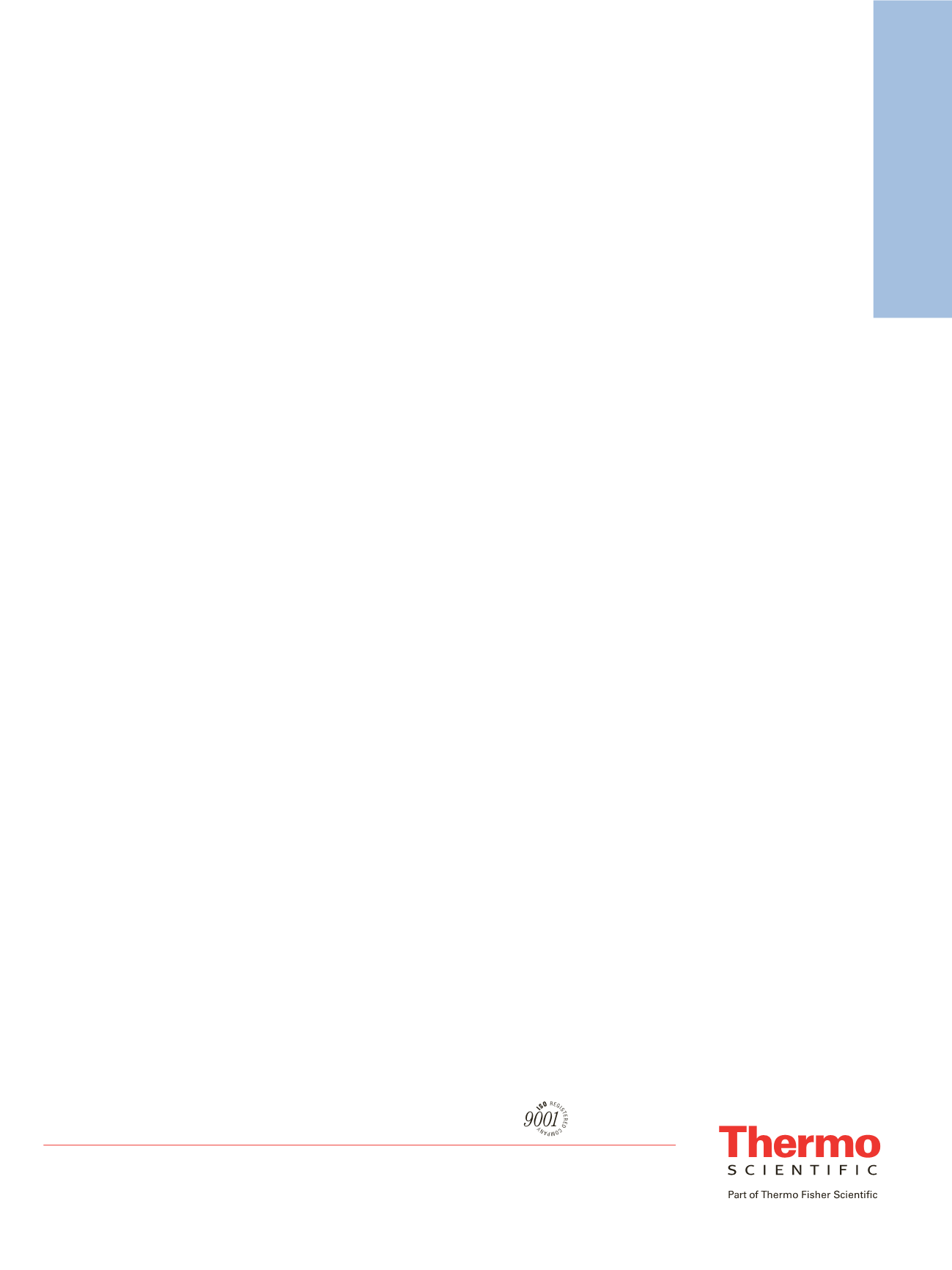

Thermo Fisher Scientific,
San Jose, CA USA is ISO Certified.
AN63629_E 09/12S
Africa-Other
+27 11 570 1840
Australia
+61 3 9757 4300
Austria
+43 1 333 50 34 0
Belgium
+32 53 73 42 41
Canada
+1 800 530 8447
China
+86 10 8419 3588
Denmark
+45 70 23 62 60
Europe-Other
+43 1 333 50 34 0
Finland/Norway/Sweden
+46 8 556 468 00
France
+33 1 60 92 48 00
Germany
+49 6103 408 1014
India
+91 22 6742 9434
Italy
+39 02 950 591
Japan
+81 45 453 9100
Latin America
+1 561 688 8700
Middle East
+43 1 333 50 34 0
Netherlands
+31 76 579 55 55
New Zealand
+64 9 980 6700
Russia/CIS
+43 1 333 50 34 0
South Africa
+27 11 570 1840
Spain
+34 914 845 965
Switzerland
+41 61 716 77 00
UK
+44 1442 233555
USA
+1 800 532 4752
www.thermoscientific.com©2012 Thermo Fisher Scientific Inc. All rights reserved. ISO is a trademark of the International Standards Organization.
Rheodyne is a registered trademark of IDEX Health & Science LLC. All other trademarks are the property of Thermo Fisher Scientific
Inc. and its subsidiaries. This information is presented as an example of the capabilities of Thermo Fisher Scientific Inc. products.
It is not intended to encourage use of these products in any manners that might infringe the intellectual property rights of others.
Specifications, terms and pricing are subject to change. Not all products are available in all countries. Please consult your local
sales representative for details.
Application Note 572
Conclusion
The use of a divert valve proved suitable for the analysis
of early eluting pesticides in acetonitrile solutions. Good
peak shapes and S/N ratios were achieved and
chromatographic problems, such as peak splitting or
broadening, were overcome. In addition, the injection
volume was increased up to 8 µL, reaching low detection
limits with good linearity and repeatability, even for a
sample concentration of 5 µg/L. It may be possible to
increase the injection volume to 10 µL, and in some cases
up to 15 µL, but with a larger loop volume. After the initial
experiments, we concluded that a 5 µL injection volume is
sufficient to achieve RMS S/N ratio greater than 10.
This technique resolves chromatographic issues involving
interactions of gradient and sample solvent in a simple
way and offers an increased laboratory sample capacity
by avoiding solvent exchange in the final extract.
Reference
1. Jake L. Rafferty, J. Ilja Siepmanna, Mark R. Schure
Journal of Chromatography A
,
2011
,
1218
, 2203–2213.



















